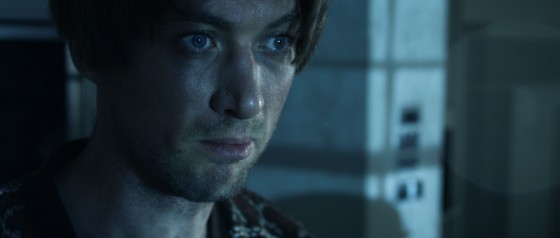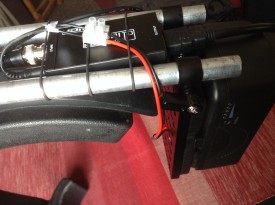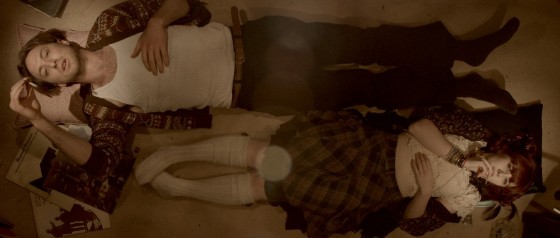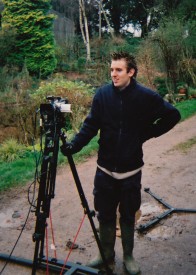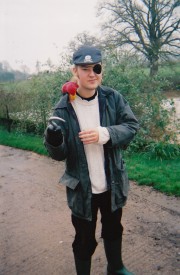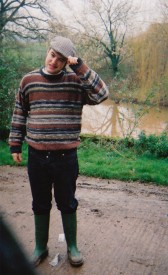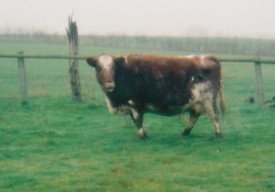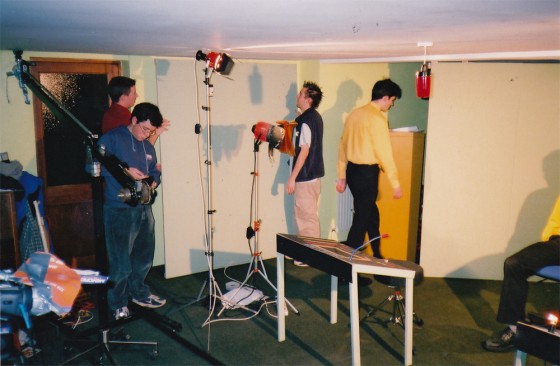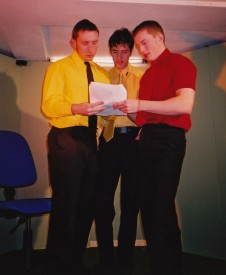As regular readers will know, I make a living from shooting mostly corporates – training videos, promotional videos, educational videos and the like. Although I’d much rather pay the bills shooting drama, it’s better than working in an office. So how did I get to this point?
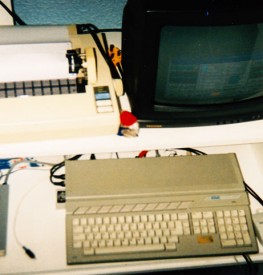
When I was a teenager, I had an Atari ST computer with a piece of software called Deluxe Paint. Deluxe Paint had an animation feature which allowed me to make very crude, flipbook-style animations with a little bit of 2D tweening – a bit like simple Flash animation. When I was about thirteen my history teacher asked the class to prepare presentations for or against the building of the very first railway line from Manchester to Liverpool. With my friend Chris Jenkins, I formed ARGUMENT – the Association for the Railway Going Up to Manchester supporting Exciting New Trains – and I animated a campaign video in Deluxe Paint. I recorded this onto VHS – which was easily done because the ST had an RF monitor output – and Chris and I voiced it over using the VCR’s audio dub feature and a microphone from Tandy.
For a subsequent English presentation, I wanted to take things a step further, so I borrowed my grandad’s Video8 camcorder and filmed live action pieces-to-camera with Chris to intercut with more animations created in Deluxe Paint and others programmed in STOS BASIC. After I borrowed grandad’s camcorder several more times, he gave it to me as a fifteenth birthday present. Gradually the live action became more interesting to me than the animation, though almost every film I made featured visual effects created in Deluxe Paint and a credits roller generated by a program I wrote in BASIC.
My amateur filmmaking really kicked off when I discovered a fellow Quantum Leap fan in my friend David Abbott, and we teamed up to make our own series of episodes in which I played the leaper and David played the holographic observer. Here’s episode fifteen of the twenty we made:
In 1995, at the age of fifteen, I started making my first feature-length film, Dark Side of the Earth, an ambitious Star Wars rip-off shot in back gardens with props made of Lego and cardboard boxes. This was ostensibly my GCSE Media Studies coursework, and you can read my production diary – complete with irreverent latter-day annotations – here.
But I quickly found that the friends I roped into acting in these films were most willing when the subject matter was comedy. Bob the Barbarian and two sequels (40 minutes, 60 minutes and 90 minutes long respectively) drew their influences from Monty Python, The Young Ones, Bottom, Newman and Baddiel’s Rest in Pieces, The Naked Gun, and French and Saunders’ film spoofs.
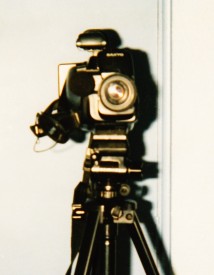
Throughout this time, I taught myself through trial and error. Back then there was no internet, no DVD extras. I was inspired by Don Shay and Jody Duncan’s book The Making of Jurassic Park, and I read Camcorder Monthly. Perhaps the most useful stuff I learnt was from a series of VHS tapes produced by the Burgess Video Group – available at a discount price with a voucher from Camcorder Monthly – in which a soft-spoken Welshman demonstrated such core concepts as The Line of Action and The Rule of Thirds. I was always ahead of the scarce nuggets of useful information which my media studies teacher could impart.
A lot of my editing was done in camera, rewinding the tape, painstakingly cueing it up and hitting record at just the right moment to produce a continuous scene on tape. Somehow I accumulated VCRs in my bedroom, always badgering Mum and Dad to buy a new one for the living room so I could have the old one. Scenes that couldn’t be edited in camera were done tape-to-tape between the camcorder and VCR or two VCRs, without an edit controller. I became an expert at judging the VCRs’ pre-roll times, hitting the record button exactly 21 frames before the point when I needed it to start recording. Music and sound effects were triggered by my ST or played in off cassette or CD and mixed live through a four channel disco mixer, again from Tandy.
By the time I was forced to quit amateur filmmaking at the age of seventeen, due to my repertoire of “actor” friends being sick of it, I had made well over 50 videos of varying length and quality. Okay, the quality didn’t vary that much. Between wrist-slashingly bad and merely quite poor.
In 1998, having finished Sixth Form with very respectable grades – the lowest, ironically, in Media Studies – I took a gap year and applied to various universities’ Film and TV Production courses. That autumn David Abbott showed me a cutting from the local newspaper which his mum had saved: The Rural Media Company in Hereford were inviting applications a to three week filmmaking course which would culminate in assisting professionals on a 16mm short film shoot. This course was my first contact with the film and TV industry, and still probably ranks amongst the five best shoots I’ve ever been on. The director of photography advised me against going to university, telling me that on-set experience was far more valuable in this industry.

I took his advice, cancelled my UCAS application, and began writing to TV companies looking for work as a camera assistant. And here’s where I think I might have made a mistake. Instead of pursuing this angle, moving to London and knocking on doors until I was gainfully employed in film and TV camera departments and could start working my way up the totem pole, I got diverted into the emerging arena of micro-budget DV filmmaking, which is where I’ve been stuck ever since.
On the way to the premiere of Lonesome Takeaway, the 16mm short, I got talking to Jane Jackson, the head of production from Rural Media. I mentioned to her that I’d recently appeared on Lee and Herring’s This Morning With Richard Not Judy on BBC 2, winning a competition to make the best cress advert, using the skills I’d taught myself doing those 50-odd amateur films. “We can always use people who can compose a shot,” Jane said. “Send us your reel.” I did, and she obviously saw something in those ropey amateur films of mine, because she soon started hiring me. Within a year I’d quit my office job and moved to Hereford because I was getting so much work from Rural Media.
The company had just bought Final Cut Pro, but no-one there knew how to use it. I took the manual home, read it cover to cover, came back and cut some footage that no-one else wanted to cut. That made me an asset to the company and they kept coming back to me.

And a large proportion of the paid work I’ve done since then can be traced back to Rural Media in some way: I work regularly for Catcher Media, run by Rick Goldsmith, who freelanced alongside me at Rural Media in the early days; for many years I made training videos for Lessons Learned, who initially called Rural Media, having found them in the Yellow Pages, but were told that they didn’t do that kind of work but to call Neil Oseman instead; and regular clients Tim Kidson and Nelson Thornes got in touch with me through Catcher Media and Lessons Learned respectively.
Yes, I get the occasional (very occasional) paid gig through Shooting People or similar networks, and yes, a major client while I was living in London was a company that came to me via the sound mixer on my own feature film, Soul Searcher, but for the most part my ability to make a living with a camera is due to getting involved with a company that was at the hub of filmmaking in an area where the media community was very small and tight-knit. And it was just dumb luck that all this happened at the time of the Mini-DV revolution, when it suddenly became possible to make videos of a decent quality for far less money than previously, and lots of new companies were springing up and looking for people who could operate a camera and an NLE.
So that’s the story of how I got to where I am today. Of course I’m always striving to move forward, to keep learning, to do more drama, to work with bigger crews, bigger budgets and reach bigger audiences. The story goes on…
